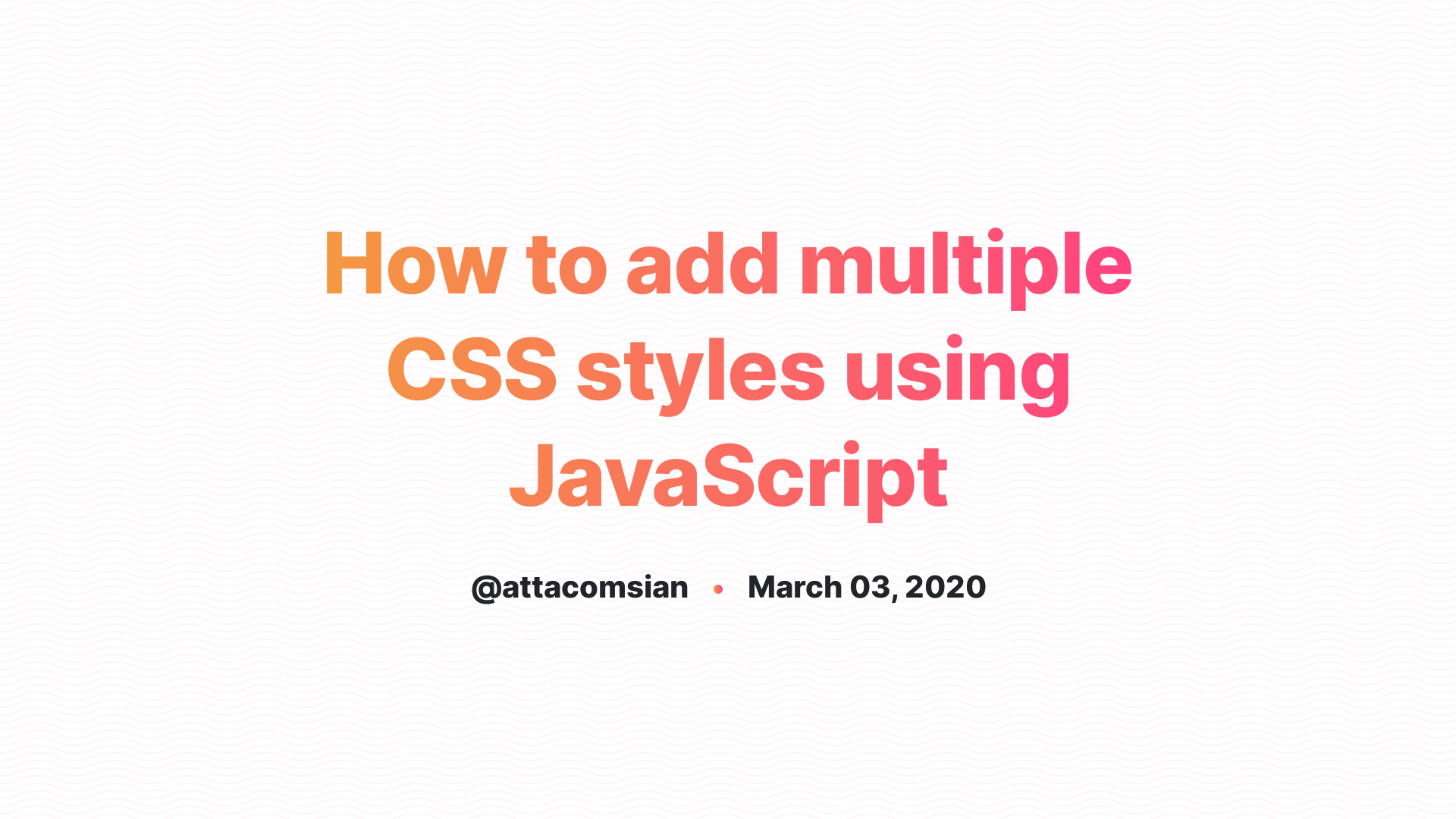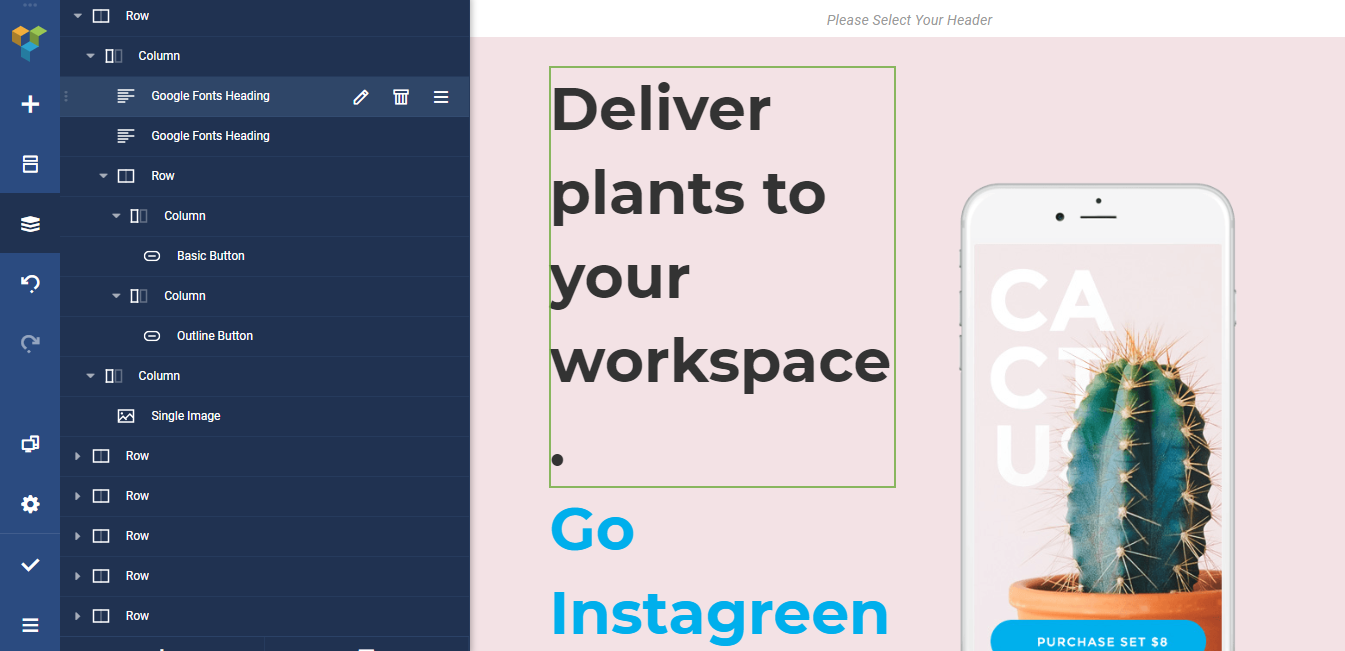However, the align-content and justify-content properties [CSS-ALIGN-3] can be used to change this, see CSS Box Alignment 3 § 5.3 Overflow and Scroll Positions. The code is written such that only those branches of the scene graph that might need CSS reapplied are visited. A node is styled after it is added to the scene graph. Styles are reapplied when there is a change to the node's pseudo-class state, style class, id, inline style, or parent. Class names, IDs, tag names and attributes, in author stylesheets, may not start with the string -amp- and i-amp-. These are reserved for internal use by the AMP runtime.
It follows, that the user's stylesheet may not reference CSS selectors for -amp- classes, i-amp- IDs and i-amp- tags and attributes. These classes, IDs and tag/attribute names are not meant to be customized by authors. Authors, however, can override styles of amp- classes and tags for any CSS properties not explicitly forbidden by these components' spec. When an element is scrolled (e.g. by the user, DOM manipulation), more of the element's content is shown. The value of text-overflow should not affect whether more of the element's content is shown or not.
First, there is a description of all value types for JavaFX CSS properties.Where appropriate, this includes a grammar for the syntax of values of that type. Then, for each scene graph node that supports CSS styles, a table is given that lists the properties that are supported, along with type and semantic information. The description of CSS properties continues for the controls. For each control, the substructure of that control's skin is given, along with the style class names for the Region objects that implement that substructure. JavaFX Cascading Style Sheets is based on the W3C CSS version 2.1 with some additions from current work on version 3 . JavaFX CSS also has some extensions to CSS in support of specific JavaFX features.
This enables the mixing of CSS styles for JavaFX and for other purposes into a single style sheet. To this end, all JavaFX property names have been prefixed with a vendor extension of "-fx-". Even properties that might seem to be compatible with standard HTML CSS have been prefixed, because JavaFX has somewhat different semantics for their values.
The result of applying the clipPath to an image inside the SVG canvas using userSpaceOnUse and objectBoundingBox . In the image on the left, the clipping path is positioned in the coordinate system established on the viewport of the SVG. When using objectBoundingBox, the bounding box of the image itself is used as the coordinate system of the clipping path. Any parts of the element that lie outside of a clipping region are not drawn.
This includes any content, background, borders, text decoration, outline and visible scrolling mechanism of the element to which the clipping path is applied, and those of its descendants. The above default behavior should provide good UX out of the box. Additionally, NativeScript 5.0 exposes a property iosOverflowSafeArea that can control how components handle the iOS Safe Area. Set this property value to true if you want the component to expand to the edges of the screen when it borders the safe area.
Set it to false to explicitly prevent this behavior. The default value for container components is true. All other components are considered content that should be constrained to the safe area and default to false. Auto Like scroll when the box has scrollable overflow; like hidden otherwise. Thus, if the user agent uses a scrolling mechanism that is visible on the screen , that mechanism will only be displayed if there is overflow.
If the computed value of overflow on a block box is neither visible nor clip nor a combination thereof, it establishes an independent formatting context for its contents. This means that a subclass will respond to the same set of properties as its ancestor classes, and to additional properties it defines itself. So, a Shape supports all the properties of Node plus several more, and Rectangle supports all the properties of Shape plus a couple more. CSS uses the term overflow to describe the contents of a box that extend outside one of that box's edges (i.e., its content edge, padding edge, border edge, or margin edge). A box's overflow is computed based on the layout and styling of the box itself and of all descendants whose containing block chain includes the box.
Note also that properties such as -fx-background-radius and -fx-background-insets can contain a series of values or sets of four values. A set of values is separated by whitespace, whereas the values or sets-of-values in a series are separated by commas. For -fx-background-radius, a single value indicates that the value should be used for the radius of all four corners of the background rectangle. A set of four values indicates that different radius values are to be used for the top-left, top-right, bottom-right, and bottom-left corners, in that order. Similarly, the -fx-background-insets property can also contain a series of values or sets of values. A set of four values for -fx-background-insets indicates that different insets are to be used for the top, right, bottom, and left edges of the rectangle, in that order.
In addition, if the styles that apply to an object have changed (for example, because its pseudo-class has changed), values from the newly applied styles will not be applied immediately. Instead, they will be applied sometime after the object's state has changed but before the scene is next painted. It is possible that a style might apply to a variable in a JavaFX object that had been assigned a value by a JavaFX program.
Since CSS styles are applied asynchronously, it's possible that values might be assigned by a program and used for some time before being overwritten by CSS at an arbitrary time later. A clipping path is conceptually equivalent to a custom viewport for the element it applies to. If you want to change the way the content around the element flows and have it respond to the defined shape of the clip path, you can use the CSS Shapes properties.
If you want to learn more about how to do that, you can check the articles I wrote about this topic. In iOS, the color property affects the color of the title and the action items. In Android, the color property affects only the title text. However, you can set the default color of the text in the action items by adding an actionMenuTextColor item in the Android theme (inside App_Resources\Android\values\styles.xml).
The ink overflow of a box is the part of that box and its contents that creates a visual effect outside of the box's border box. In this article, we will see how to set text overflow property in CSS. The text-overflow property is used to specify that some text has overflown and hidden from view from the user. The text-overflow property only affects content that is overflowing a block container element. The number of images in the series of -fx-background-image values determines the number of background images that are painted.
The -fx-background-repeat, -fx-background-position, and -fx-background-size properties each can contain a series of values. The Scene object has no settable CSS properties, nor does it have any pseudo-classes. However, the root node of the scene is assigned the style class "root" . This is useful because the root node of Scene is the root container for all active scene graph nodes. Thus, it can serve as a container for properties that are inherited or looked up. Beginning with JavaFX 2.1, the Parent class has a stylesheets property, allowing style sheets to be set on a container.
This allows for one branch of of the scene graph to have a distinct set of styles. A child will take its styles from its own inline styles, the style sheets of all its ancestors, and any style sheets from the Scene. Each node honors a set of properties that depends on the node's JavaFX class . The properties honored by each node class are shown in detail in tables later in this document. Ultimately, a property value string is converted into a JavaFX value of the appropriate type and is then assigned to an instance variable of the JavaFX object.
JavaFX CSS does not support CSS layout properties such as float, position, overflow, and width. However, the CSS padding and margins properties are supported on some JavaFX scene graph objects. All other aspects of layout are handled programmatically in JavaFX code. In addition, CSS support for HTML-specific elements such as Tables are not supported since there is no equivalent construct in JavaFX.
When reserving space for a scrollar placed at the edge of an element's box, the reserved space is inserted between the inner border edge and the outer padding edge. For the purpose of the background positioning area and background painting area however, this reserved space is considered to be part of the padding box. The scrollable overflow of a box is the set of things extending outside of that box's padding edge for which a scrolling mechanism needs to be provided.
The number of items in the-fx- border-color property determines the number of borders that are painted. Each border in the series is painted using information from the corresponding series item of the -fx-border-style, -fx-border-width, -fx-border-radius, and -fx-border-insets properties. The implementation allows designers to style an application by using style sheets to override property values set from code. This has implications for the cascade; particularly, when does a style from a style sheet override a value set from code?
Style sheets from a Parent instance are considered to be more specific than those styles from Scene style sheets. JavaFX has a rich set of extensions to CSS in support of features such as color derivation, property lookup, and multiple background colors and borders for a single node. These features add significant new power for developers and designers and are described in detail in this document.
Clipping is one of those graphical operations that allow us to create irregular shapes in an otherwise rectangular web page. Indeed, clipping is a perfect companion to CSS shapes. If you've read any of my previous articles about CSS Shapes, then you already know that the clip-path property can be an indispensable companion to CSS Shapes in some use cases. Padding and element size ——For block-level elements When width is non-auto, padding will affect the element size When width is auto or box-sizing is border-box, padding does no... For Block block level elements The padding value is set too large and will definitely affect the element size. Width is not auto, padding will also affect the size Width is auto or box-sizing is borde...
CSS Padding The space between the element border and the element content defined CSS Padding property. Padding Padding element of the background color when the eleme... In other words, CSS is far below in sophistication and power when compared even to first generation of pixel shaders – an ancient technology from two decades ago.
Style Attribute Description Fill This is the fill color for your element. It can be color name, hex value, or RGB or RGBA values. Like our line example above, we can specify a color for our element. Stroke-width Stroke width specifies the width of our line or boundary.
Opacity Opacity will specify an opacity/transparency number. 0 is completely transparent and 1 is completely opaque. Font-family For text elements, we can specify the font-family.
Font-size We can also specify the font-size for text elements. Finally, within the truncate() method we'll first verify that we are executing in the context of a browser. Then, we'll store the initial value of the innerText property so that if we need to truncate the text later based on the window being resized we can do so.
We then truncate the text and append the ellipsis by comparing the value of the element's scrollHeight to the clientHeight. We'll continue to remove words until the content fits within the specified height of the element. The events loaded, unloaded and layoutChanged are UI component lifecycles events and are universal for all classes that extend the View class . They can be used with all NativeScript elements (e.g. layouts, buttons, UI plugins, etc.). NameTypeDescriptionorderNumberSets the order in which child element appear in relation to one another.flexGrowNumberIndicates that the child should grow in size, if necessary. Sets how much the flex item will shrink in proportion to the rest of the child elements in the flex container.
When not specified, its value is set to 1.alignSelfString(Android-only) Overrides the alignItems value for the child. Create method to add support for a DomHelper config. Creates and appends elements/children using document.createElement/appendChild. This method is used by the modern toolkit for a significant performance gain in webkit browsers as opposed to using DomQuery which generates HTML markup and sets it as innerHTML. True to walk the dom and see if parent elements are hidden. If false, the function only checks the visibility of the element itself and it may returntrue even though a parent is not visible.
Gets the x and y coordinates needed for scrolling an element into view within a given container. These coordinates translate into the scrollLeft and scrollTop positions that will need to be set on an ancestor of the element in order to make this element visible within its container. Returns the content region of this element for purposes of constraining or clipping floating children. That is the region within the borders and scrollbars, but not within the padding. Return type - The class instance or javascript object returned by the method or property (Ext.Component in this case).
Scrollbars which by default are placed over the content box and do not cause scrollbar gutters to be created are called overlay scrollbars. Such scrollbars are usually partially transparent, revealing the content behind them if any. Their appearance and size may vary based on whether and how the user is interacting with them. The space between the inner border edge and the outer padding edge which user agents may reserve to display the scrollbar is called the scrollbar gutter. The number of items in the -fx-border-image-source property determines the number of images that are painted. With looked-up colors you can refer to any other color property that is set on the current node or any of its parents.
This is a very powerful feature, as it allows a generic palette of colors to be specified on the scene then used thoughout the application. If you want to change one of those palette colors you can do so at any level in the scene tree and it will affect that node and all its decendents. CSS also provides for certain properties to be inherited by default, or to be inherited if the property value is 'inherit'. If a value is inherited, it is inherited from the computed value of the element's parent in the document tree. In JavaFX, inheritance is similar, except that instead of elements in the document tree, inheritance occurs from parent nodes in the scene graph.
It handles cases where the ellipsis element are initially hidden by setting up a one-shot show event that re-runs the ellipsis code when the item is first displayed. This is handy for master-detail views or tree-views where some items aren't initially displayed. Also, note that an empty clipping path will completely clip away the element that had the clip-path property applied. ClipPath elements are never rendered directly; their only usage is as something that can be referenced using the clip-path property. 1 、CSS padding It is a shorthand attribute that defines the space between the element border and the content of the element, that is, the upper, lower, left, and right inner margins.






























No comments:
Post a Comment
Note: Only a member of this blog may post a comment.